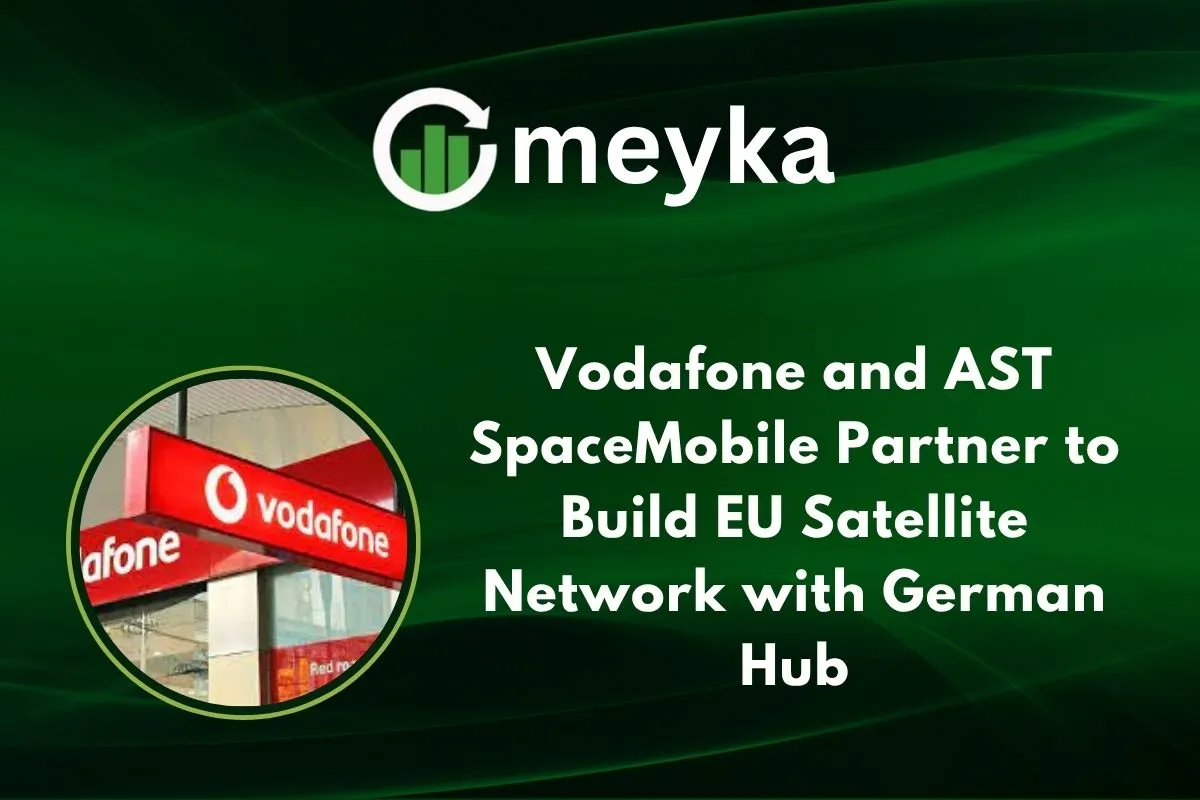Vodafone and AST SpaceMobile Partner to Build EU Satellite Network with German Hub
We’re living in a time when being “off‑grid” no longer means zero signal. With the partnership between Vodafone and AST SpaceMobile, we’re stepping into a future where even remote places may stay connected. They’re teaming up to build a European satellite network, anchored by a hub in Germany. This move could change how we all stay online, whether we’re in a city or in the countryside.
Background of Vodafone and AST SpaceMobile
Vodafone is one of the biggest telecom firms in Europe and beyond. It serves hundreds of millions of customers and runs major mobile and broadband networks. AST SpaceMobile is a newcomer in the sense of its space‑based aim: it wants to bring mobile broadband connectivity from satellites directly to smartphones. Together, they bring blue‑chip telecom experience on Vodafone’s side and cutting‑edge satellite tech on AST’s side.
Vodafone has worked on satellite connectivity before with AST, especially where ground networks struggle. That experience sets the context for this major partnership.
Details of the Partnership
In March 2025, Vodafone and AST SpaceMobile signed an agreement to create a European direct‑to‑device satellite service business (currently dubbed “SatCo”). The aim: provide mobile network operators across Europe with a turnkey solution to deliver satellite‑based broadband directly to regular smartphones.
Although the hub is announced as based in Germany (e.g., “German hub”), many sources say the joint venture’s headquarters will be in Luxembourg, and operations will cover Europe broadly. For example, the venture will serve mobile operators in 21 EU member states.
Vodafone brings its deep network and engineering skills; AST brings satellites and space innovation. Together, they will build earth stations (ground infrastructure), link those with satellites in low Earth orbit (LEO), and integrate with Vodafone’s terrestrial 4G/5G networks.
Technology Behind the Network
The technological core: satellites in low Earth orbit (LEO) operating like remote radio‑heads for mobile networks. AST’s BlueBird satellites are designed to connect directly with unmodified smartphones (regular mobile devices). For example, Vodafone and AST demonstrated a video call from space to a standard phone in a remote area.
This tech means we don’t necessarily need special satellite phones. We could use our regular mobile devices and still connect via satellite when terrestrial networks aren’t reachable. Vodafone’s statement: “Vodafone’s space‑based mobile broadband will mean our customers can stay connected, wherever they are.”
The ground stations (earth stations) will interface with Vodafone’s existing land‑based mobile networks (4G/5G). The satellite link will act as a backhaul or extension to get coverage in hard‑to‑reach places. The system is designed for “direct‑to‑device” services.
Benefits for European Users
So what does this mean for us in Europe, and for Vodafone customers?
- Coverage everywhere: Regions where mobile network towers are few, mountainous zones, rural areas, and islands, could now get mobile broadband service.
- Improved speeds: Vodafone and AST say they’ve achieved tests with more than 20 Mbps on a handset via satellite, and future satellites are aiming for up to 120 Mbps.
- Seamless experience: Users won’t have to switch devices or do a special setup. Their smartphone will move from a terrestrial network to a satellite when needed.
- Business and public benefit: For emergency services, maritime or remote operations, the connectivity can mean safety, productivity, and inclusivity. It supports Europe’s digital goals.
In effect, Vodafone is positioning the service so its mobile customers can keep access regardless of location.
Challenges and Considerations
Of course, nothing is without hurdles.
- Technical scale: Building a large constellation of satellites and ground stations is slow and expensive. AST needs to scale production.
- Regulation & sovereignty: Europe demands digital sovereignty, so the network must meet standards of security, data control, and relevant licences. Vodafone is emphasising that.
- Competition: Other players in satellite and non‑terrestrial networks (NTN) are also moving fast. Vodafone and AST will need to stay ahead.
- Environmental/space debris: More LEO satellites mean more concerns about space traffic, debris, and sustainability; also, ground‑station footprint.
- Cost & rollout timing: They plan to launch commercial services in 2026. Until then, many users won’t immediately benefit.
Broader Impact on Telecom and Satellite Industry
The partnership between Vodafone and AST SpaceMobile signals a shift in how mobile connectivity works in Europe. For telecom operators: This creates a model where satellites are part of the mobile network ecosystem, not just an add‑on. Vodafone’s move could push other operators to follow suit. For Europe: The venture supports the region’s “digital decade” targets, aiming for full connectivity and network resilience by 2030. The link to digital sovereignty is strong.
For consumers and businesses: Affordable, continuous mobile broadband may no longer be a dream for remote zones. This could help bridge the digital divide, support remote work, commerce, education, and health. Plus, for Vodafone: It reinforces their brand as a forward‑looking, inclusive telecom, serving not just urban centers but everywhere.
Conclusion
In short, Vodafone’s partnership with AST SpaceMobile could reshape mobile connectivity across Europe. By combining Vodafone’s network strength with AST’s satellite tech, we’re looking at a future where “no signal” becomes far less common. If deployment proceeds as planned, commercial service could start around 2026. For Vodafone customers, and indeed for many European users, this means more places, more reliable connectivity, ty and more inclusive access to the digital world. The satellite network we’re building now could well be the lifeline for connectivity tomorrow.
FAQS
Yes, the joint venture between Vodafone and AST SpaceMobile, often called SatCo, has its main headquarters in Luxembourg. It will manage satellite operations and support European mobile coverage.
AST SpaceMobile builds its own satellites. They are called BlueBird satellites and are designed to provide mobile broadband directly to standard smartphones without special devices.
AST SpaceMobile partners with telecom companies like Vodafone. These partners help connect the satellites to mobile networks and deliver service to users across different countries.
Disclaimer:
The content shared by Meyka AI PTY LTD is solely for research and informational purposes. Meyka is not a financial advisory service, and the information provided should not be considered investment or trading advice.






